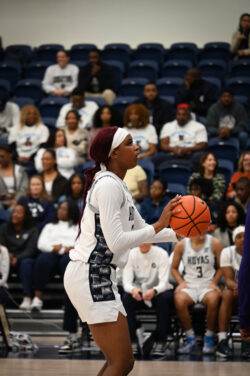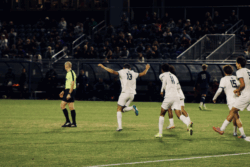In second grade, sometime between being deemed “of an age of reason” by the Roman Catholic Church and finally shaking off that pesky imaginary friend, I came into baseball consciousness.
That year, 1994, the Cleveland Indians played their first game at Jacobs Field, the newly completed park which shone with the glimmer of a thousand spilled beers and smelled of sweet relish and sweat. Steel workers and yuppies alike flocked to “the Jake,” along with my family, who shared season tickets with another clan and a couple of priests. Up in Section 555 I learned about seeing-eye singles, the merits of colorful profanity and how to get the beer guy’s attention.
Over the next couple of years, the Tribe flourished, and for some reason, I came to the conclusions that our streak of success had a lot to do with the ball club’s new digs. My thinking had something to do with the notion that “the clothes make the man” and the reasons behind why you brushed your hair for picture day and told your dentist you actually did floss, he’d just caught your gums on an off-week. It’s all about keeping up appearances. Not only did the park look good, but it brought a new mojo, a fresh start for the team. The stadium was baseball superstition executed on a massive scale and financed by taxpayer dollars. It doesn’t get any more American than that.
Next April, another expensive manifestation of sports superstition will be christened: Nationals Park, home of the Washington Nationals in Southeast D.C., along the banks of the Anacostia River. The Nationals’ official website already has a live clock counting down the days until the park is filled with life, overpriced nachos and the flushing sounds of a thousand toilets. This past Sunday, RFK Stadium played host to one final game of baseball (it will continue to be the home of D.C. United), and though some fans got nostalgic, Nationals players were holding onto no sentimental memories. Center fielder Nook Logan was quoted in the Washington Post saying, “This place stinks!”
Indeed, so do the Nationals. They will finish up this season near the bottom of the NL East, and no doubt, the prospect of greener infields at a better ballpark lingers in the minds of those ever-so-eloquent ballplayers.
But with all the excitement swirling around the opening of the new stadium, the costs of moving on up have been largely ignored. Earlier this spring, the news broke that the D.C. Village Family Emergency Shelter, the District’s largest family shelter, may be closed this fall to make way for a bus station in for the new baseball facility. The shelter houses around 350 people, and though Mayor Fenty promised to find housing for the affected families, one has to wonder why bus routes and stadium placement have taken precedence over impoverished families in the District.
Yes, we all love baseball and getting new things, but homeless families love dinner and a warm bed. The city isn’t throwing them out on the streets, but the mere fact that people’s lives might be uprooted for the sake of better traffic flow around the ballpark speaks volumes about how far out of wack priorities can get. The taxpayers of Washington, D.C. are paying $611 million dollars to build a park that a lot of them didn’t even want in the first place. Former mayor Anthony Williams pushed hard for baseball’s return and the new stadium as a way to invigorate Washington, yet in order to justify the greater ends of urban vitality those who need the most help are being pushed aside as afterthoughts.
What my seven-year old self didn’t realize as I chomped on a hot dog from my upper deck perch was that the logic behind the ballpark wasn’t just cool new digs and bigger Jumbo-tron; it was the economic revitalization of the city. Thirteen years later, I still watch the Tribe from those nosebleed seats, but on my walk to the stadium, it’s hard not to notice the empty office buildings and multitudes of homeless for whom October doesn’t hold the glimmer of promise; it just means cold weather.




